Last Updated: February 14th, 2020
Shaun O’Boyle is a prolific photographer who works primarily in landscape and architectural photography. It’s possible you’ve already seen some of his work – profiling the remnants of old industrial buildings, worn down architecture, beautiful landscapes in frigid locations of the Arctic & Antarctic, and more.
My interest in Shaun’s work began by being exposed to his photographs at scientific installations in areas of the world few people get to explore like the island region of Svalbard. His journey into the world of photography is filled with these types of interesting subjects and projects, as well as plenty of recognition for his work as he was named a Guggenheim Fellow in Photography, has showcased a wide range of work in a number of public exhibitions, and even has published one book of photos (with another on the way).
If you have any interest in landscape/architecture photography, or just like hearing stories of travel to some of the worlds more remote regions, you’ll love this interview I did with Shaun.
The Interview
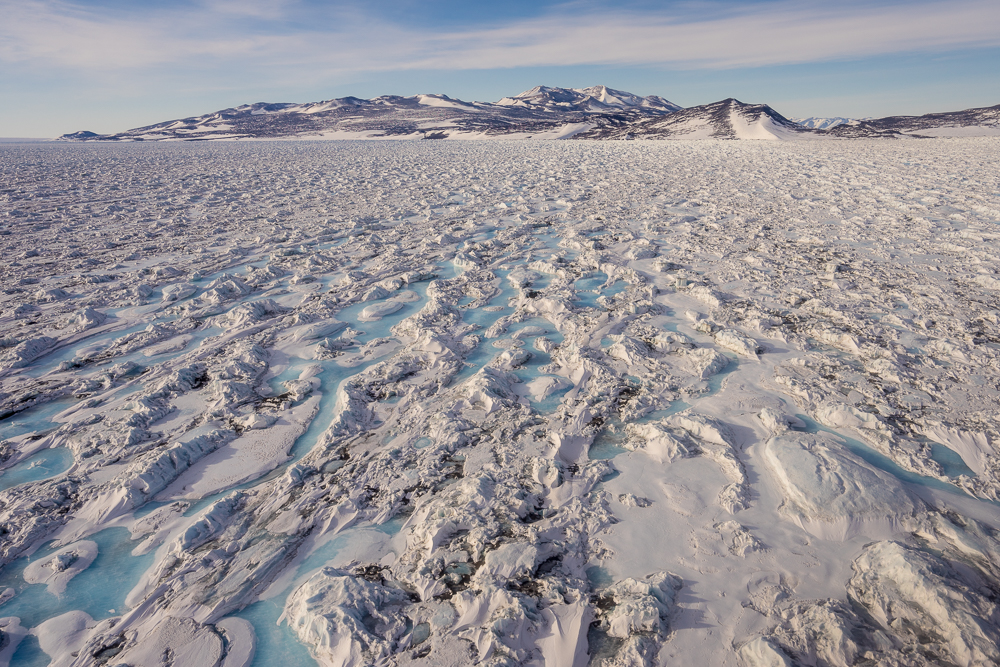 Could you share some details about your background in photography (both in general and academically) for my audience?
Could you share some details about your background in photography (both in general and academically) for my audience?
My background is in architecture, and I bring that interest to my photography. I’m self-taught other than a photo 101 class in college. My subjects tend to follow my interests, which center around architecture, history and culture and how these come together on the landscape.
Your work is immediately identifiable, and you have taken to documenting very unique regions of the world that most people won’t go to themselves. A location like Svalbard is very much “off the radar” for most. What lures you to these types of locations to photograph?
I was selected for the National Science Foundation’s Antarctic Artist and Writers program in 2015 and went to the McMurdo Station region of Antarctica. This is a competitive grant program that is unique to the NSF’s Antarctic program and brings a few artists each year to the Ice to realize a project. This definitely hooked me on polar subjects and locations.
The following year I applied for a Guggenheim Fellowship, proposing an Arctic version of my project, extending the work I had done with the NSF. When I was made a Fellow in 2017, I was able to organize 4 trips to the Arctic including Iceland and Svalbard.
With significant portions of your work being created in the Arctic and Antarctica regions, what are some of the motivators that lead you to want to photograph these types of places?
I was originally drawn to Antarctica to photograph some of the structures left by the first explorers on the continent.
Scott and Shackleton left huts from their early 20th century attempts to reach the South Pole, and these huts are still there. This interest is an extension of my long interest in ruins and their surrounding landscapes.
At McMurdo, I photographed these sites, and the more recent architecture of the US science stations and field camps that are in the same region. I spent 7 weeks there making visits to many locations by snowmobile and helicopter, and hiking as well. I hiked over 100 miles while there in the Dry Valleys and around Ross Island.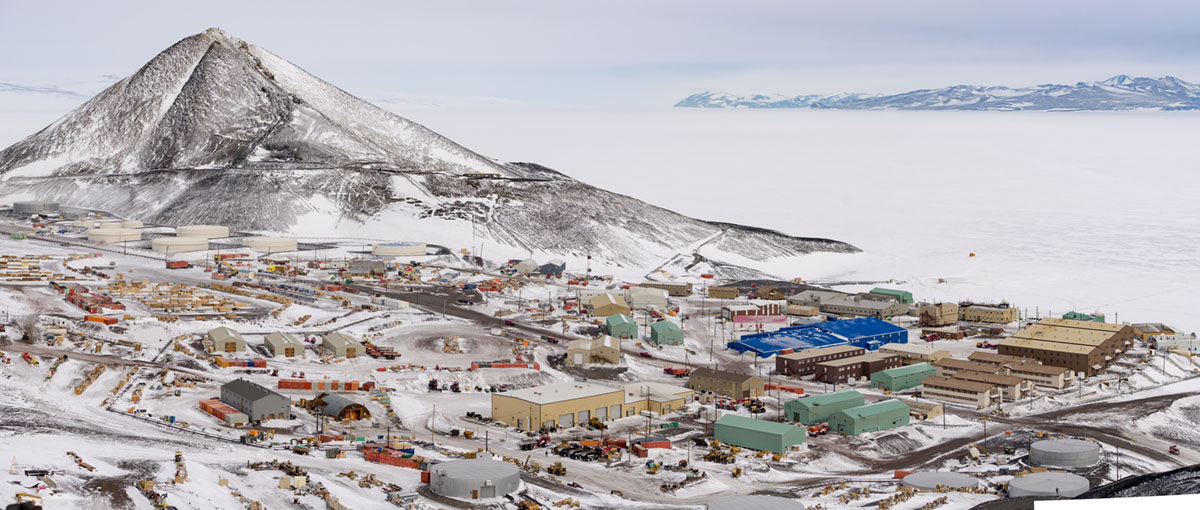
Sitting in my comfortable office in 80 degree (F) temperatures while I write these interview questions, it’s easy to be an observer of your photographs. Having been to chilly Arctic countries like Iceland in the past myself, I also know the struggle that sometimes comes with being exposed to rough climates and chilly weather. What are the most difficult parts about photographing these harsh environments for you?
Dealing with cold and wind is the biggest challenge for photography.
There were days with the temperature in the minus 30’s and 40’s, and camera battery life was measured in minutes. I’ve learned a few tricks since then, keeping the camera under my parka when not shooting, batteries warm inside an inner layer etc. but the cold temperatures is what separates it from shooting in other regions. The winds in the Polar regions can have a personality, and it’s not a good one. It can be frigid and unrelenting. Just holding a camera steady can be a challenge.
These tend to be the driest places on earth, so condensation is less of a concern as it is in warmer latitudes.
What has been your best photography trip to date? What made it so great?
 They have all been great.
They have all been great.
How successful they are usually comes down to luck hitting the right weather and light.
Usually when traveling I don’t have the luxury of hanging around a location for days, I have limited time and have to keep moving to get to other locations, so I have to work with the weather and light that I happen upon, which is often not ideal.
Iceland was great in many ways, I came in on the tail of a major winter storm in February so was treated to some very harsh weather, but also big seas in the South, which made for some dramatic seascapes. But, I was stunned by the number of tourists there. Traffic jams and lines of tour buses at the parking areas of the various sites. Iceland has some hard choices to make about tourism and limiting the number of people.
Antarctica stands out as a favorite place, it’s unique, with zero human presence other than the few science stations, it’s unlike any other place I’ve been or will be. Nature and landscape are on a scale that is difficult to describe. Having that much time to spend there was truly a gift. And I will be going back, I’ll be at the South Pole this November photographing the station and the many unique telescopes and other scientific instruments there.
Related: You can read my interview with Icelandic photographer Charlotta Hauksdóttir here.
Can you describe the experience of being awarded a Guggenheim Photography Fellowship? How has this impacted your work in photography?
You need a good body of work and a significant history in the field you are working in to consider applying.
From the Guggenheim website: “Guggenheim Fellowships are intended for individuals who have already demonstrated exceptional capacity for productive scholarship or exceptional creative ability in the arts.”
The process involves getting recommendations from colleagues, submitting a portfolio, and most important I think, writing a strong proposal for a project you want to complete using the funds. I spent months writing my proposal, going through a number of drafts, having friends read it and give feedback, etc.
So far the Fellowship has given me opportunities to work in the Arctic, which I’m just finishing up this year. It’s given me stature when applying for other grants, and it may help when I attempt to publish the work done over the past in book form. I hope so, because I’m writing intros for the book, and starting edits on the photos.
For many, photography is simply viewed as an art form. But, as I see you have worked with the National Science Foundation and integrate images of scientific instruments, telescopes, etc. into your collections. What importance do you feel photography has in support of scientific research?
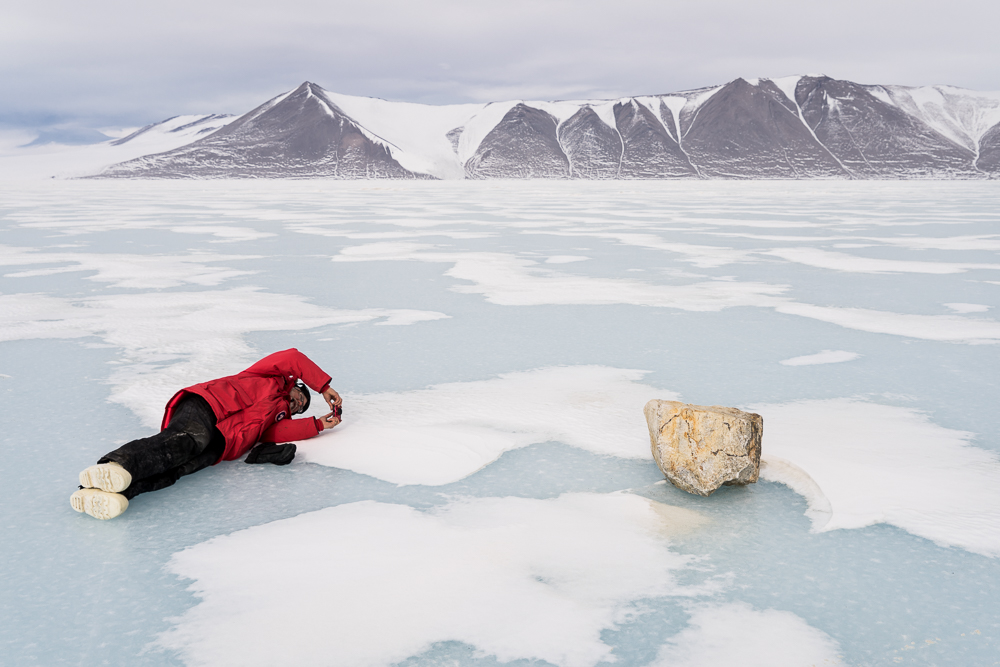 The NSF’s Antarctic Artist and Writers Program is essentially an educational program. Their goal with the program is to share the work being done by scientists in Antarctica with a wider audience.
The NSF’s Antarctic Artist and Writers Program is essentially an educational program. Their goal with the program is to share the work being done by scientists in Antarctica with a wider audience.
Photography has the potential to do this and be a creative form at the same time. It’s not just documentation, but an interpretive and expressive form of sharing what is happening in the sciences.
I think it’s a great synergy between the sciences and arts fields, using the strengths of all involved.
There is some truly amazing work being done by researchers and scientist that you never hear about. The Arts can bring that to a wider audience.
Your book Modern Ruins: Portraits of Place in the Mid-Atlantic Region (published in 2010) provides a look at your work that is very different in theme when compared with more recent excursions to the Arctic & Antarctica regions as we’ve already covered. My attention was grabbed given a number of the places on display are right in my backyard (such as Bethlehem Steel). What do you find inspiring to photograph these types of run down, often abandoned, locations?
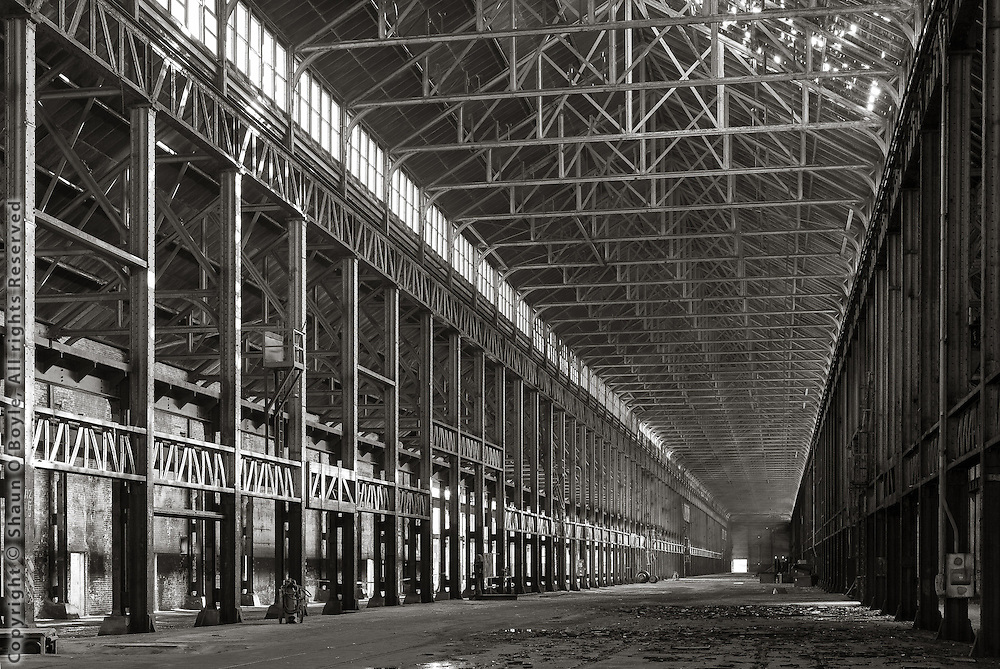 To me sites like Bethlehem Steel, and the coal fields that fed the mills, are living history, central to the culture of those areas. These places have shaped the landscapes and urban areas we live in today. It’s where we came from, it shaped who we are. The ruins are the remains of the past, they become the standing representation of the weight of history and how it shapes the present.
To me sites like Bethlehem Steel, and the coal fields that fed the mills, are living history, central to the culture of those areas. These places have shaped the landscapes and urban areas we live in today. It’s where we came from, it shaped who we are. The ruins are the remains of the past, they become the standing representation of the weight of history and how it shapes the present.
[amazon_link asins=’B0140DNNQA’ template=’ProductAd’ store=’ffl0d-20′ marketplace=’US’ link_id=’4cc98e15-15fd-4c13-b0de-4cdc56c6b83d’]
Right now, you are in the process of Kickstarting your photography journey to the South Pole. While an amazing opportunity lies in front of you, most people would be terrified to consider spending time in a place that is commonly -50 degrees Fahrenheit. What are you looking to gain most from this trip? And what do you expect to be the toughest parts about it (aside from the cold)?
This will be a fascinating project at the South Pole.
Much of the science there is related to astronomy and cosmology, the origins of the universe, the study of the cosmic background radiation created during the big bang, and the search for neutrinos.
Translating that into photographs will be a challenge, and my approach will be to first approach the instruments that are used to do this work. These are highly engineered cutting edge instruments designed for a very specific focused task. I have a history of working in the engineering field myself doing machine design, so it is an interest close to my experience, and astronomy has been a lifelong fascination.
One of the goals of the project is to combine my photographs of these instruments with output from the same instruments with comments by the scientists. This will be a part of the project where I collaborate with scientists in the field.
Can you give us a rundown of what photography gear you use regularly to produce the work you do? And will your gear of choice change in a trip to the South Pole due to the particularly harsh conditions?
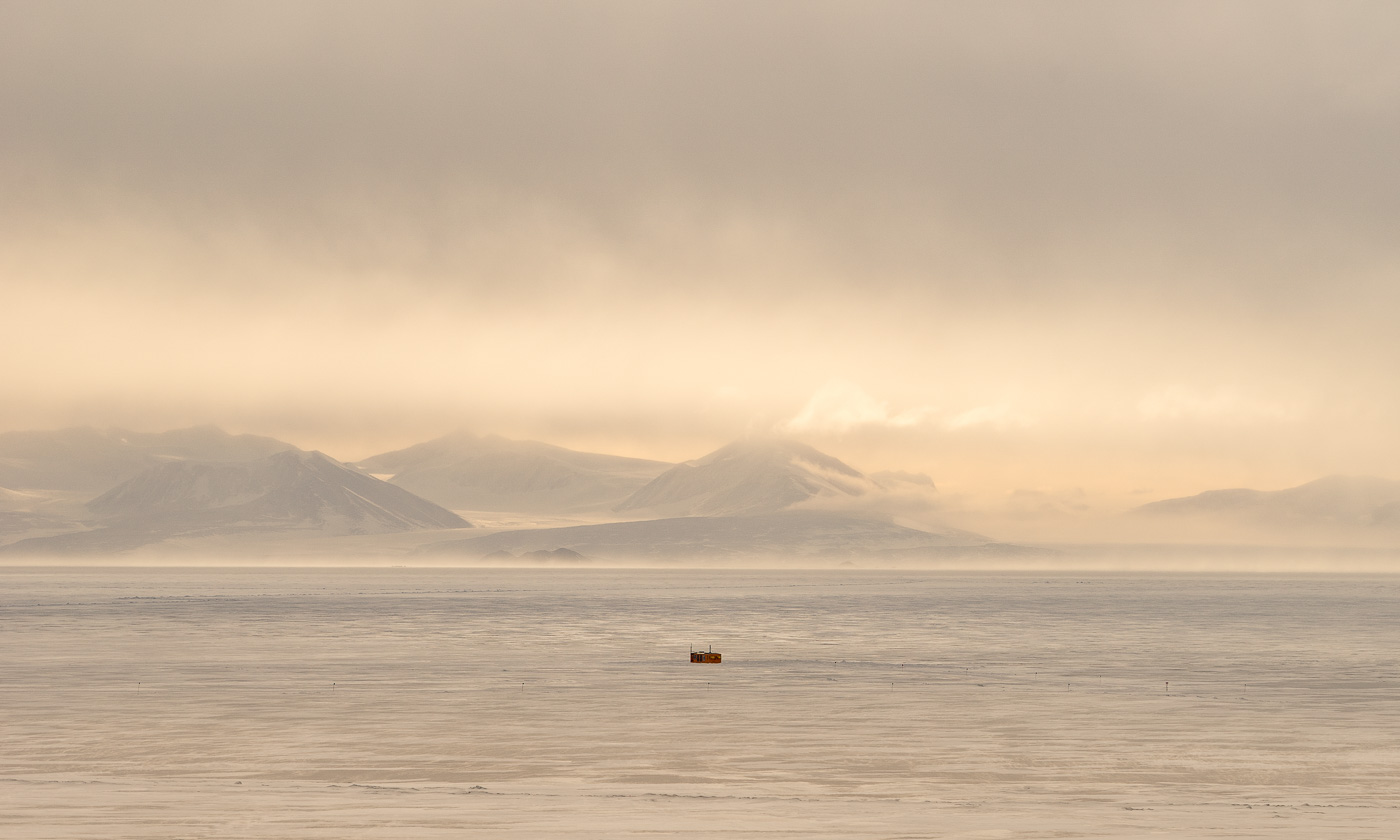 I currently use a Sony system, and it’s proven itself reliable even in very harsh conditions.
I currently use a Sony system, and it’s proven itself reliable even in very harsh conditions.
I think most of the camera system out now would work just as well. Many people use Nikon and Canon in these conditions.
I have 3 main bodies: an A7r, A7r2 and an A7r3. I use both Zeiss and Sony lenses, and a couple Canon lenses as well. I’ll also bring a couple pocket cameras, such as a Ricoh GR2, and a Sony RX100III.
I’m also going to experiment with an old Polaroid Land camera I have, a 250 Automatic, along with a stack of B&W film stock I have been saving for a project such as this. It will be interesting to see how the Polaroid works in the extreme cold of the South Pole. I’ll also bring a flash unit, wireless remotes, and a tripod for interior work.
As you work with both film and digital cameras, can you talk a little bit about the benefits of each as it pertains to your work?
I don’t do much with film anymore, other than Polaroid, and that is pretty rare because the film is very expensive.
Do you use any post-processing (ie: editing, compositing, etc.) to create your images, or is your work strictly created in camera?
I edit in Lightroom, do B&W conversions there. Most of my editing mimics darkroom edits.
Are there any photographers (or other artists/people in general) you look to as inspiration for your own work?
I don’t look at too many other current photographers work, I tend to look to other fields for my inspiration. I read a lot all over the spectrum of writing, fiction and nonfiction, listen to a lot of writers podcasts, and I look at drawings and paintings.
Of course, I have my photography heros including Atget, Evans, Sudek, Smith, Frank.
Conclusion
You can learn more about Shaun O’Boyle, his photography, and his upcoming travels to the South Pole by checking out his website, photo blog, and Kickstarter page.
As of this writing, his Kickstarter for his South Pole trip has been fully funded – and any extra support is encouraged to help cover any additional costs that may arise. As an added benefit, most support tiers include fine art prints of his trip – so well worth the cost if you want to support this great photographer.
For another great interview here on FFL, check out our chat with Sent Into Space – an organization that also intermingles photography with science and became popular when a couple fun photos they took from space went viral.